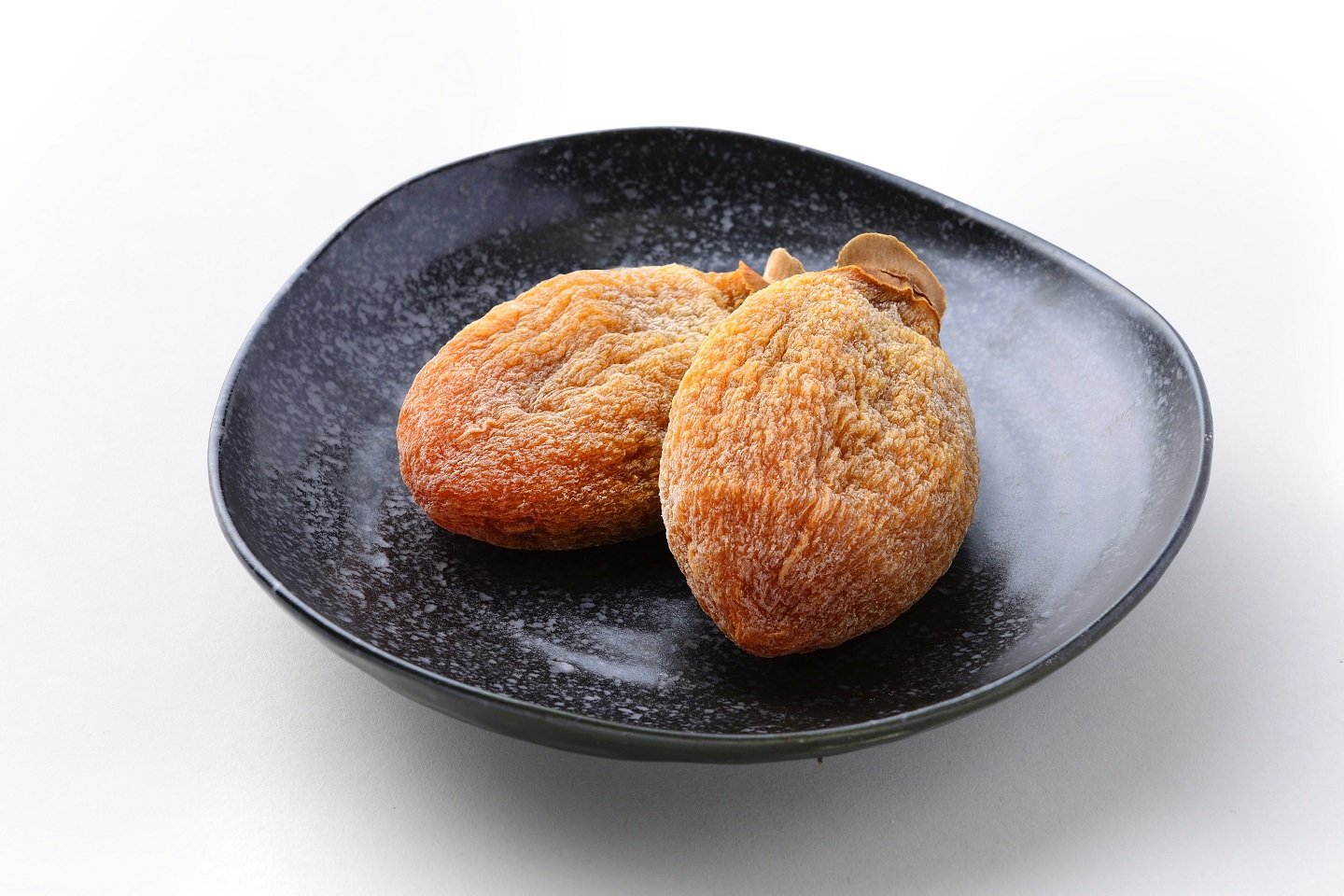Toyama Hoshigaki
| Registration Number | 98 |
|---|---|
| Name of the GI | Toyama Hoshigaki |
| Class | Processed Foodstuffs |
| Date of Protection | 2020/08/19 |
| Producing Area |
Toyama Prefecture
Fukumitsu Town, Nishitonami County and Johana Town, Higashitonami County of Toyama Prefecture (Part of the current Nanto City, Toyama Prefecture), administrative name of the area as of October 31, 2004 |
| Applicant - Name and Address | Federation of Toyama Hoshigaki Shipping Cooperatives (Agricultural Producers’ Cooperative Corporation) 1248 Takamiya, Nanto City, Toyama Prefecture |
Producing Area
Toyama Hoshigaki refers to a dried persimmon made from a native fruit variety that has been grown for more than 300 years in the former Fukumitsu Town and Johana Town in the current Nanto City, Toyama Prefecture. Its major features are an amber, bullet-like weighty appearance, melting sweetness, and a chewy texture.
Toyama Hoshigaki has been enjoyed as a specialty of the region for more than 300 years and is popular to give as a gift in Japan.
For the production of Toyama Hoshigaki, the Sanja persimmon variety is used as the main ingredient. Sanja persimmons are harvested at the appropriate time based on the readiness color chart.
The processing of dried persimmons begins with peeling the fruit and applying sulfur dioxide fumigation as a pre-treatment. Next, the initial stage of dehydration is done by either sun or machine drying. The drying and resting processes are repeated several times to remove any bitterness and reduce the moisture content to 45 percent or less. After the initial drying process, the first hand-rubbing takes place and a coal briquette dehydration (other dehydration methods that can attain similar effects are allowed) process is repeated. Additionally, another hand-rubbing is performed. These processes adjust the firmness of the fruit and create the bullet-like appearance that is characteristic of Toyama Hoshigaki. Lastly, coal briquette dehydration is carried out until the peeled persimmons are dehydrated to a moisture content of 30 percent or less.
The shipping standard is specified in terms of size, weight, quantity, color, shape, and firmness of the product, and only normal dried persimmon without foreign matter attached or foreign odor can be shipped.
Sanja, a native variety of the local area, is extremely vulnerable to anthracnose, which tends to occur in soil with high nitrogen levels. For this reason, Sanja is considered a variety not suitable for cultivation in other areas. On the other hand, the infertile red soil of the production area makes the area suitable for Sanja cultivation.
Furthermore, Sanja is a tall-growing tree and the main branches emerge from the higher part of the trunk, which enables cultivation in heavy snowfall areas.
Dried persimmon production reportedly took root in this area when MAEDA Toshitsune (1594-1658), the third lord of the Kaga Domain (1), favored the taste of dried persimmons made in Fukumitsu and encouraged their production.
It was not until in 1935, that dried persimmons were sold as Toyama Hoshigaki. As a result of the selective breeding of a superior lineage of Sanja, beginning around 1955, a lineage offering superior size, high yields, and good flesh quality was selected. At the same time, the production techniques were standardized at a high level.
The average yearly shipping volume of Toyama Hoshigaki is 300 to 400 tons.
- Kaga Domain: A feudal domain (han) ruled under the centralized feudal system of the Edo Period. The domain covered most of Kaga Province (southern part of the current Ishikawa Prefecture), Noto Province (northern part of Ishikawa Prefecture), and Etchu Province (Toyama Prefecture), constituting the largest domain of the Tokugawa Shogunate. The Kaga Domain was ruled by the Maeda family until the end of the Edo Period.


